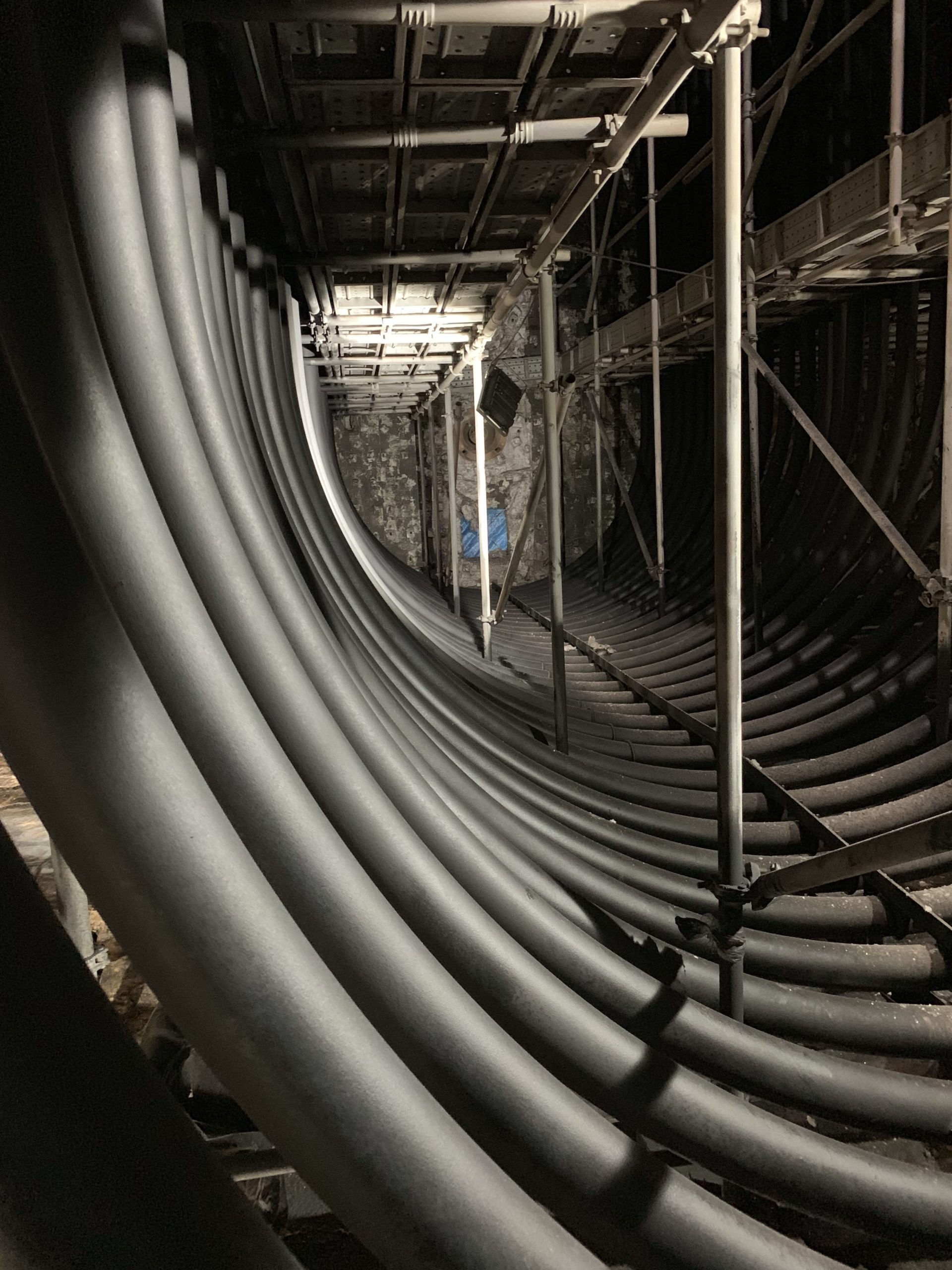Instead of a full-scale revamp, we may address these issues by the application of Cetek’s High Emissivity Ceramic Coatings to the refractory surfaces. Cetek High Emissivity Ceramic Coatings provide improved efficiency of radiant heat transfer from refractory surfaces in tubular fired heaters.
Cetek pioneered the use of high emissivity ceramic coatings applied to the refractory surfaces in radiant sections of fired heaters and tubular reformers. It has now become an accepted means of improving the efficiency of radiant heat transfer, leading to energy savings as well as environmental and reliability benefits. We have developed and successfully used a range of ceramic coatings for different substrate types, operating environments and targeted application benefits.
In fired heaters and tubular reformers, the necessary thermal energy to drive the endothermic processes is provided by burning a fuel/air mixture and transferred to the process by three heat transfer mechanisms: radiation, convection and conduction. The primary means of heat transfer is radiation.


The increase in radiant heat transfer efficiency may be used by Cetek’s clients to save fuel consumption, while maintaining production rate. Energy savings range from 5% to 15%, depending on service and heater configuration, when using a combination of refractory and tube coatings.
The increase in radiant heat transfer efficiency may be used by Cetek’s clients to increase production rate, while maintaining fuel consumption. Production increases range from 5% to 15%, depending on service and heater configuration.
By improving radiant section heat transfer efficiency, more of the available heat generated by the burners is absorbed by the process. This means that the flue gas temperature leaving the radiant section (BWT – Bridgewall Temperature) will be lower. If your fired heater is limited by BWT, Cetek’s high emissivity ceramic coatings are a simple, cost-effective fix.
More efficient heat transfer in the radiant section will overcome any firing duty limitation – a solution readily available from an application of Cetek’s high emissivity ceramic coatings.
In the radiant section of a fired heater, much of the radiant energy from the flame/flue gas is transferred directly to the process/catalyst tubes; however, a significant proportion interacts with the refractory surfaces. The mechanism of this interaction has an appreciable effect on the overall efficiency of radiant heat transfer. A major factor in determining the radiant efficiency is the emissivity of the refractory surface.
At the process heater operating temperatures, new ceramic fiber linings, for example, have emissivity values of around 0.4. Insulating fire brick (IFB) and castable materials have emissivity values around 0.6. These materials have been designed with structural considerations and insulating efficiency as the primary requirements. They tend not to handle radiation in the most efficient way. Cetek Ceramic Coatings, however, with emissivity values above 0.9, have been designed specifically to supplement the radiation characteristics of the refractory surfaces.
High emissivity surfaces are able to radiate energy across a broad wavelength band lessening the interference of the CO2 and H2O in the flue gas.
When the radiation from a flame strikes a perfect radiator, all of the energy is absorbed, but most importantly, it is transformed into “black body radiation”, as the wide waveband form. As the energy is re-emitted from the surface, it is able to penetrate the atmosphere in the furnace, composed of the combustion products, with little being re-absorbed and taken to the stack by the draft.
Therefore it is more readily available to heat the load in the furnace.
If the surface were a poor radiator, or one having a very low emissivity value, the energy striking the surface would be reflected back from the surface still in its untransformed state, therefore more readily absorbed by the furnace atmosphere. The effect is to “superheat” the furnace atmosphere, or flue gas, resulting in wasted energy lost to the stack.
Cetek’s high emissivity ceramic coatings applied to the refractory surfaces provide a significant effect, which varies for different types and designs of fired heaters, or tubular reformers. In order to derive the most benefit, it is important that a complete technical analysis/evaluation of the effects of the application is completed beforehand. The benefit in the radiant section and the effects on the convection section are studied and reported before any commitment is made by the client or Cetek.
Typical high emissivity coating applications in steam methane reformers show productivity benefits (as energy savings, or production increase) ranging from 2.5% to 5.0%.
IGS is here to provide information, answer questions and create an effective solution for your needs.
The reduction in flue gas temperature leads to a significant reduction in thermal NOx emissions. The typical reduction in NOx emissions in steam methane reformers,for example, is 20% to 30%, irrespective of burner type.
CO2 emissions are reduced proportionately with the productivity benefits.
Cetek’s ceramic coatings (high emissivity or neutral emissivity) provide a real encapsulation of ceramic fiber (blanket, modules, or panel) insulation. There is no loss of friable fiber from radiant sections and therefore no fouling of radiant section tubes/catalyst tubes, convection section tubes, screens of SCR (Selective Catalytic Reduction) units, or loss to the environment, through the stack. Entry to radiant sections during shutdowns is less hazardous since negligible contamination results.
The emissivity coatings have superior longevity and Cetek’s experienced technicians apply it on-site to the refractory linings of process heaters/furnaces. We provide high emissivity coating systems for every type of refractory, from dense, high alumina brick to lightweight castable refractory and ceramic fiber modules or blankets. For some heaters, we recommend fired heater process tube coatings to reduce corrosion.
The thin film high emissivity coatings are inert, non-catalytic, and water-based, offering a complete environmentally safe process improvement.
The service is supported by a superior Health & Safety Program, yielding a safety record better than industry standards.
